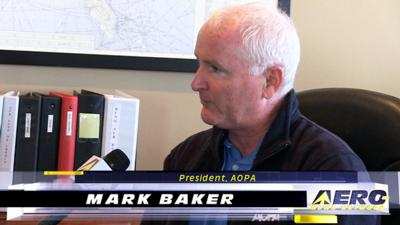Fri, Jul 08, 2016
Congressional Leaders Announced Wednesday They Had A Funding Instrument They Can Pass
The FAA authorization bill that will be debated in Congress over the next few days contains third class medical certificate reforms that were proposed in the Pilots' Bill of Rights 2 by U.S. Senator James Inhofe (R-OK).

“This has been slow, painstaking work – but important work as EAA members have told us this is the top legislative priority,” said EAA CEO/Chairman Jack J. Pelton, who has been part of the EAA team working this issue. “The Senate has already approved the concept of aeromedical reform on several occasions, and EAA was determined to find an avenue to get it through the House as well.”
The medical provisions within Pilots’ Bill of Rights 2 legislation developed by Sen. Inhofe proposed that:
- Most pilots who have held a valid third-class medical, either regular or special issuance, within the 10 years prior to the legislation’s enactment would never need to get another FAA medical exam. The rule would apply to pilots flying VFR or IFR in aircraft weighing up to 6,000 pounds and carrying up to five passengers at altitudes below 18,000 feet and speeds up to 250 knots. Instead, they would visit their personal physician every four years and take an online aeromedical factors training course every two years.
- Pilots who develop certain medical conditions, including a small list of specific cardiac, mental health, or neurological conditions, will have to obtain a FAA special issuance medical one time only, significantly reducing the time and money spent navigating the FAA’s medical bureaucracy through repeated renewals as exists today.
- For pilots who have not had a valid medical in the past 10 years and those who have never applied for and received a medical certificate, a one-time third-class medical certification by an aviation medical examiner will be required. After a pilot has been medically certified once, either through the regular or special-issuance processes, he or she will also be able to fly indefinitely without needing to go through the FAA medical certification process again, relying instead on the periodic visits to a personal physician and taking the online aeromedical course.
- When visiting their personal physician every four years, pilots will need to fill out a form and provide it to the doctor performing the exam. The pilot must make a note of the visit and keep the signed form in his or her logbook.
- The form will include a short medical history questionnaire as well as a list of items the doctor must include in the examination. Following the exam, both the physician and the pilot must sign the form verifying that the items were examined and discussed.
EAA and AOPA released the following statements after the announcement that Congress will include third class medical reform in proposed FAA extension legislation.
“As we mentioned often since the beginning of this effort, bringing change through legislation is not quick or easy," Pelton said. "EAA and AOPA have fought every day to overcome significant hurdles in Congress and will continue to do so until aeromedical reform is signed into law. The medical reform proposed in the Pilots’ Bill of Rights 2 is a major step forward in changing the landscape of medical certification for recreational and personal flying. It provides relief for pilots while maintaining safety – and in some cases, enhancing it.”

“Including third class medical reform in this package is great news for general aviation and we’re very pleased to see it moving forward as part of the FAA extension,” said AOPA President Mark Baker. “We appreciate the efforts of general aviation advocates in both the House and Senate. This is a vital issue for the general aviation community. Medical reform is long overdue and we look forward to seeing the House and Senate pass this legislation in the coming days.”
The provisions of the FAA extension package have been negotiated over the past two weeks, and it is expected that both the House and Senate will pass the legislation and send it to the President to be signed into law before Congress adjourns next week.
After the President signs the bill into law, the FAA will have up to one year to develop and issue regulations before the third class medical provisions become effective.
(Source: Joint EAA/AOPA news release. Images from file)
More News
“We respectfully call on the City of Mesa to: 1. Withdraw the landing fee proposal immediately 2. Engage with the aviation community before making decisions that impact safet>[...]
High Speed Taxiway A long radius taxiway designed and provided with lighting or marking to define the path of aircraft, traveling at high speed (up to 60 knots), from the runway ce>[...]
Aero Linx: International Federation of Airworthiness (IFA) IFA uniquely combines together all those with responsibility for policies, principles and practices concerned with the co>[...]
Controller’s Expectation That VW02 Would Have Departed Sooner Led To An Inadequate Scan And Loss Of Situational Awareness Analysis: A Robinson R-44 helicopter N744AF, VW02 (V>[...]
A Few Questions AND Answers To Help You Get MORE Out of ANN! 1) I forgot my password. How do I find it? 1) Easy... click here and give us your e-mail address--we'll send it to you >[...]
 Aero-News: Quote of the Day (12.09.25)
Aero-News: Quote of the Day (12.09.25) ANN's Daily Aero-Term (12.09.25): High Speed Taxiway
ANN's Daily Aero-Term (12.09.25): High Speed Taxiway ANN's Daily Aero-Linx (12.09.25)
ANN's Daily Aero-Linx (12.09.25) NTSB Final Report: Diamond Aircraft Ind Inc DA20C1 (A1); Robinson Helicopter R44
NTSB Final Report: Diamond Aircraft Ind Inc DA20C1 (A1); Robinson Helicopter R44 ANN FAQ: Q&A 101
ANN FAQ: Q&A 101




